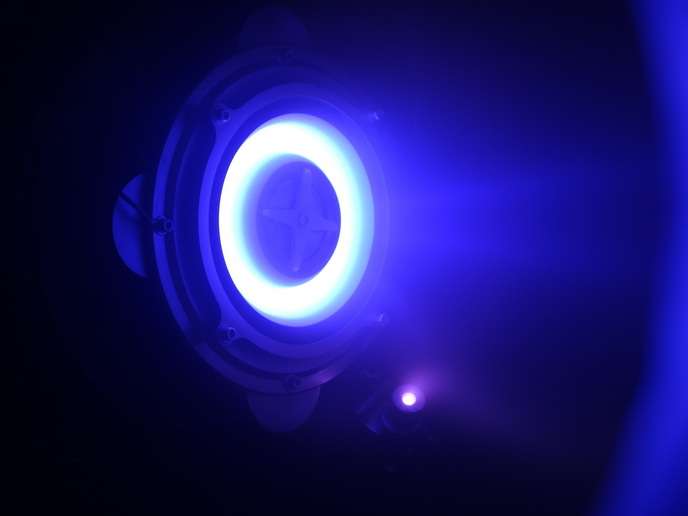Next-generation electromagnetic thruster for satellites in low Earth orbit
Growth in the global market for small satellites in low Earth orbit (LEO) is accelerating rapidly, with increasing deployment in constellations. About 3 000(opens in new window) small satellites were launched around the world from 2011 to 2020, and another 2 304(opens in new window) in 2022 alone, about a 30 % increase from the previous year. Innovation in propulsion technologies will play a key role in increasing Europe’s independence and competitiveness in this socioeconomically important sector. While chemical propulsion of small satellites has historically been the most common, electric propulsion technologies are increasingly used and are garnering widespread attention. Among the key objectives of next-generation electric propulsion systems are reducing their cost and complexity while increasing their operational lifetime. The EU-funded HEMPT-NG2(opens in new window) project addressed both objectives with its advanced electromagnetic thruster. Its important advantages relative to currently available electrostatic propulsion systems – a drastic reduction in propellant consumption, longer lifetime and minimal complexity – could boost European competitiveness in the small satellite market.
Advancing a state-of-the-art plasma thruster
The project’s high-efficiency multistage plasma thruster is designed to move a satellite by ionising and accelerating a propellant via the combined action of electric and magnetic fields. It will enable satellites to correct their position in orbit (station keeping) or to change orbit (orbital manoeuvring). HEMPT-NG2 focused on advancing the maturity of the plasma thruster, which was developed within the context of the HEMPT-NG project. To achieve the project’s objectives, researchers employed a combined simulation and experimental campaign. This was supported by the design of targeted testing tools implemented in the assembly, integration and test (AIT) procedures.
Increased efficiency and lifetime at lower cost
Essential to the high-efficiency thruster’s ion propulsion technology are its permanent magnets for plasma confinement. According to project coordinator Peter Holtmann of Thales(opens in new window) (Germany): “Its magnetic cells, arranged in a cusped mirror configuration, enable efficient entrapment of plasma electrons. This prevents the electrons from contacting the discharge channel walls, reducing erosion and extending the thruster’s lifetime and operational stability.” In addition, the efficient electron confinement enables a high ionisation efficiency and negligible electron (current) loss. The small starter electron current from the cathode is amplified by an 'ionisation avalanche' so the plasma is sustained with minimal electrical power input. The plasma thruster’s high acceleration voltages enable a higher specific impulse (a measure of how efficiently the energy in the propellant is converted to thrust), drastically reducing propellant consumption and thus the propellant mass that must be stored on board. Furthermore, “the flexible high-efficiency multistage plasma thruster supports multiple different space tasks with the same thruster and it can operate with both conventional xenon and much less expensive krypton propellants,” adds Holtmann.
Paving the way to the LEO satellite constellation market
Altogether, the HEMPT-NG2 advances led to a robust design with high efficiency and reduced overall electric propulsion system cost. The universal LEO thruster module was optimised for mass production and a market analysis was performed, paving the way for commercialisation of the high-efficiency plasma thruster and boosting Europe’s competitiveness in the small satellite sector.







